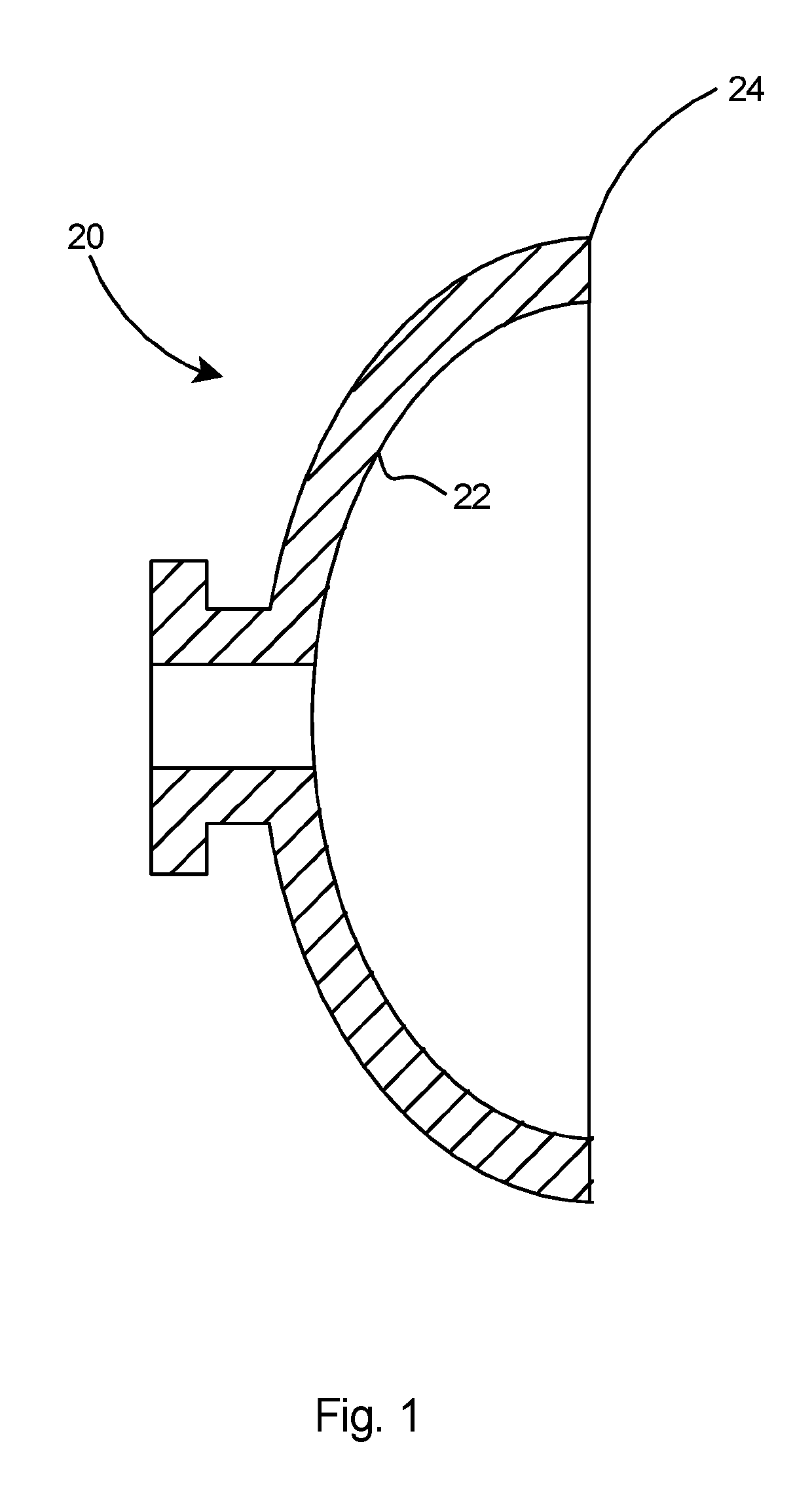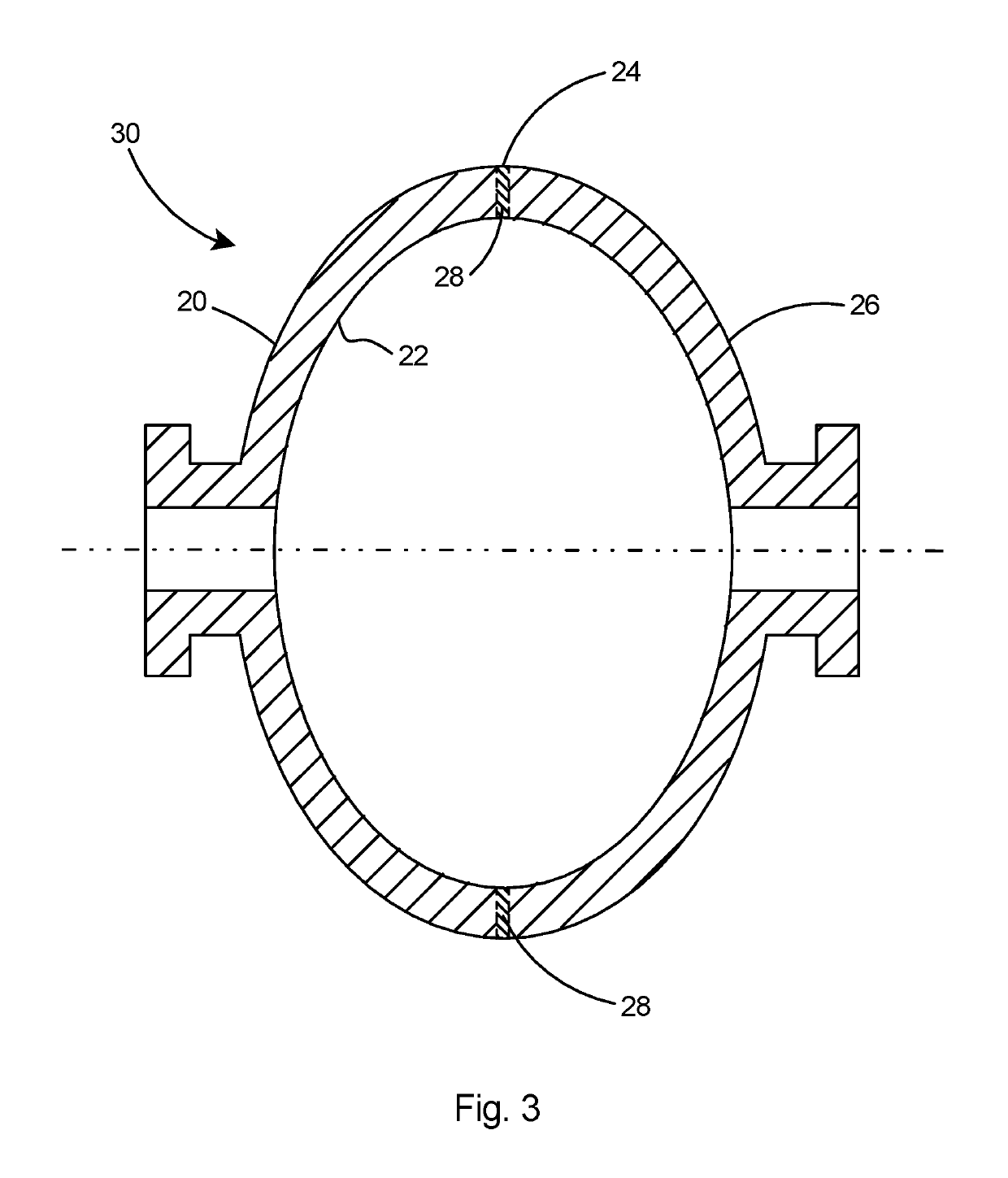High performance SRF accelerator structure and method
a technology of accelerators and superconducting radio frequencies, applied in accelerators, electrical equipment, etc., can solve the problems of limiting the ability to achieve a high q/sub>0/sub>, reducing the esub>acc/sub>, and no available techniques for producing srf cavities, etc., to achieve economic and efficient effect, cost reduction
- Summary
- Abstract
- Description
- Claims
- Application Information
AI Technical Summary
Benefits of technology
Problems solved by technology
Method used
Image
Examples
Embodiment Construction
[0018]The present invention is a method for producing high performance accelerator structures, such as SRF cavities, with high a quality factor (Q0) as well as high accelerating gradients (Eacc) using ingot niobium with relaxed specifications. The method eliminates the use of chemical polishing which loads the cavities with performance-degrading hydrogen.
[0019]SRF cavities quench at high magnetic field region (near the equator) due to first flux penetration where residual stresses are high and copious hydrogen is present. Magnetic flux reduces thermal conductivity and increases specific heat there by considerably reducing the thermal diffusivity. Thermal conductivity and specific heat data for niobium varies with different interstitials (purity of niobium) and process conditions.
[0020]The preferred method of the present invention for forming accelerator structures with high quality factor and high accelerating gradients is the three dimensional (3D) machining of the half cells at a ...
PUM
| Property | Measurement | Unit |
|---|---|---|
| temperature | aaaaa | aaaaa |
| RMS) roughness | aaaaa | aaaaa |
| roughness | aaaaa | aaaaa |
Abstract
Description
Claims
Application Information
 Login to View More
Login to View More - R&D
- Intellectual Property
- Life Sciences
- Materials
- Tech Scout
- Unparalleled Data Quality
- Higher Quality Content
- 60% Fewer Hallucinations
Browse by: Latest US Patents, China's latest patents, Technical Efficacy Thesaurus, Application Domain, Technology Topic, Popular Technical Reports.
© 2025 PatSnap. All rights reserved.Legal|Privacy policy|Modern Slavery Act Transparency Statement|Sitemap|About US| Contact US: help@patsnap.com



